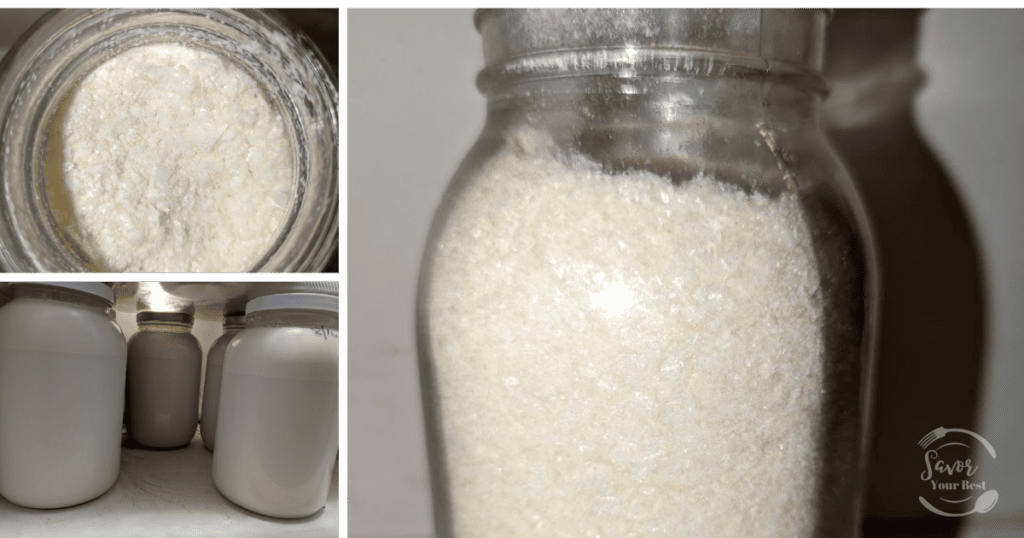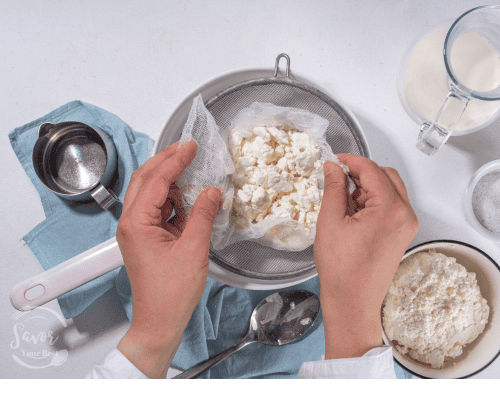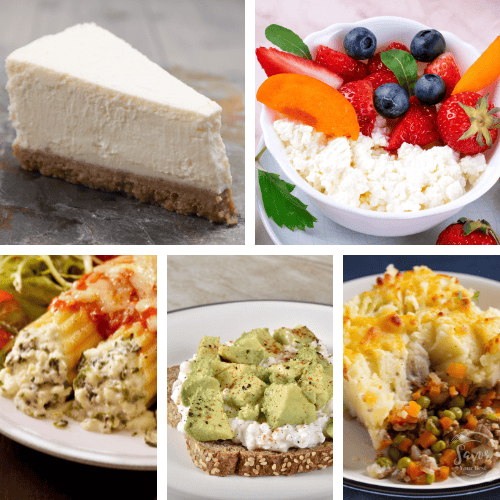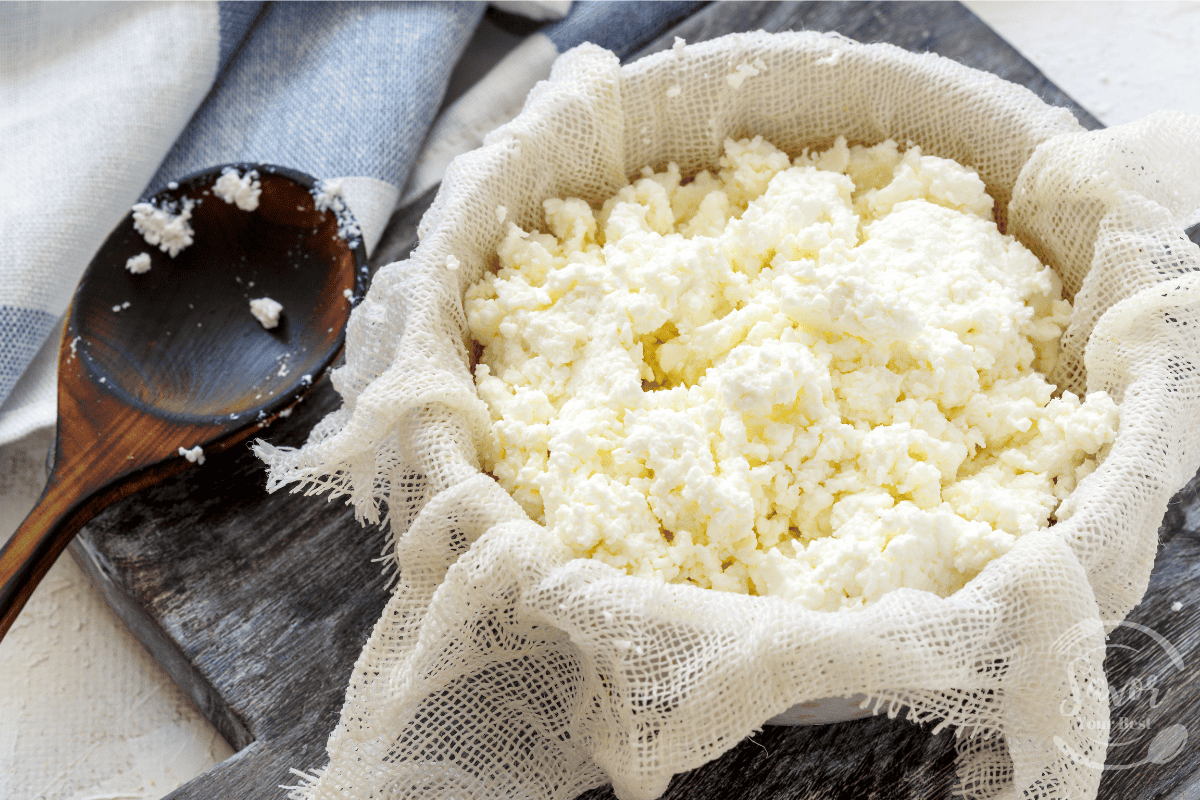Making homemade cottage cheese from freeze dried milk has its perks. This approach is perfect for creating only as much as you need, preventing waste, and tailoring your cottage cheese’s texture and flavor for specific recipes. Plus, with freeze dried milk, you don’t have to worry about spoilage since the ingredients are shelf-stable until you’re ready to use them.
Cottage Cheese for Health and Wellness
Cottage cheese is packed with impressive nutritional benefits that make it a popular choice for health-conscious individuals. This dairy product is particularly high in protein, which is essential for muscle repair, growth, and maintaining satiety. Just one cup of cottage cheese can contain around 25 grams of protein, making it an excellent addition to meals for those looking to boost their protein intake without consuming excessive calories.
In addition to protein, cottage cheese provides essential vitamins and minerals, including calcium, phosphorus, and magnesium. Calcium is crucial for bone health, while phosphorus and magnesium play a role in maintaining energy levels and supporting muscle function. Cottage cheese also supplies vitamin B12, important for red blood cell formation and neurological health, and riboflavin (vitamin B2), which helps the body convert food into energy.
Cottage cheese is also naturally low in carbohydrates, making it suitable for low-carb or keto diets. Its fat content can be adjusted depending on the milk used (e.g., full-fat, low-fat, or skim- adjust this during rehydration), allowing you to customize it to your dietary needs. Additionally, cottage cheese contains beneficial probiotics which support gut health and digestion.
Packed with protein, calcium, and healthy fats, cottage cheese made from freeze dried milk supports your nutritional goals while giving you control over the ingredients. Making your own cottage cheese can lower added sodium and eliminate preservatives. With the flexibility to make just what you need, you’re also cutting down on food waste, making it a sustainable choice as well.
So why wait? Grab your freeze dried milk powder, and get started with homemade cottage cheese today. Enjoy it fresh, without the need for added preservatives or stabilizers!
Cottage Cheese in Everything: The Healthy Swap for Indulgent Recipes
Cottage cheese is exceptionally versatile due to its mild flavor, creamy texture, and ability to take on both sweet and savory flavors, making it an ideal, lower-calorie substitute in a wide range of dishes. With a high protein content and low fat levels, it’s a great addition to indulgent recipes that could benefit from a lighter twist without compromising taste.
In savory dishes, cottage cheese can replace ingredients like ricotta in lasagna, stuffed shells, and casseroles. Its mild flavor blends well with herbs, garlic, and spices, transforming it into a tasty filling that’s protein-packed yet lower in calories. For example, try blending cottage cheese with a bit of garlic, spinach, and Parmesan to create a creamy, lower-calorie filling for stuffed peppers or zucchini boats.
For desserts and sweet snacks, cottage cheese can be a healthier substitute for cream cheese or mascarpone. You can blend it until smooth and add it to baked goods, pancakes, or smoothies for a creamy texture and boost of protein. Whipping cottage cheese with a touch of honey, vanilla, or cinnamon creates a fantastic base for dessert parfaits or a topping for fruit and granola.
Cottage cheese is also a natural fit for adding creaminess to dips or sauces without adding the calories of sour cream or heavy cream. Blending it with salsa, avocado, or herbs makes for a tasty, lower-fat dip that pairs well with veggies or whole-grain crackers.
This ingredient’s ability to seamlessly adapt to different flavors means you can experiment with it in both classic and creative recipes, helping make comfort foods and treats just a bit lighter and healthier.
Why Use Freeze Dried Milk for Cottage Cheese?
Using freeze dried milk to make cottage cheese allows you to control the amount you make and the consistency. Since freeze dried milk rehydrates to its original liquid state, it’s simple to make just the right quantity, preventing the waste that can happen with store-bought cottage cheese. Plus, it’s a great way to skip preservatives and additives while also making the texture ideal for your recipe.

How to Freeze Dry Milk and Milk Alternatives
With your Harvest Right Freeze Dryer, freeze drying milk is simple! Pour fresh milk into freeze dryer trays, set to the appropriate freeze dry cycle, and let the machine work its magic. After freeze drying, store the milk powder in airtight containers or mylar bags to keep it fresh. You can rehydrate the milk by mixing equal parts of freeze dried milk powder and water. For milk alternatives like almond or soy milk, follow similar freeze drying and rehydration steps for lactose-free or plant-based cottage cheese options.
For a detailed tutorial on freeze drying milk and alternatives, check out our full guide.
Simple Steps to Rehydrate Freeze Dried Milk
Rehydrating freeze dried milk is simple and gives you fresh-tasting milk in minutes. The standard rehydration ratio is equal parts freeze dried milk powder and water. For each cup of rehydrated milk, you’ll mix 1 cup of freeze dried milk powder with 1 cup of warm water. Stir the mixture thoroughly to ensure a smooth, creamy consistency, as the powder can take a minute or so to fully dissolve.
If you’re looking to make a larger amount, for example, 4 cups of rehydrated milk, use 4 cups of freeze dried milk powder mixed with 4 cups of water. This straightforward 1:1 ratio will deliver a reconstituted milk similar to fresh milk in taste and texture. For a lighter version, you can add a bit more water, but this can reduce the milk’s richness, so adjust according to your preference.
Step-by-Step Guide to Making Cottage Cheese from Freeze Dried Milk
With this recipe, using 4 cups of rehydrated freeze dried milk yields approximately 1 to 1.5 cups of cottage cheese, depending on factors like milk fat content and curd size. Adjust the yield by varying the amount of milk you rehydrate.
- Rehydrate the Milk: Mix 4 cups of freeze dried milk powder mixed with 4 cups of water. Stir until well-blended.
- Heat the Milk: Pour the rehydrated milk into a pot and heat it to around 120°F, which will help activate the curdling process.
- Add an Acid: Stir in a few tablespoons of vinegar or lemon juice to start curdling. Slowly stir, watching as curds begin to separate from the whey.
- Curd Formation: Continue heating on low for another 5-10 minutes until curds fully separate.
- Strain the Curds: Pour the curds into a cheesecloth-lined strainer, letting the whey drain.
- Rinse and Salt: Rinse the curds under cold water to remove any excess acidity. Salt to taste, and adjust based on how you’ll use the cottage cheese.
Now you have homemade cottage cheese from freeze dried milk! Store it in the refrigerator and consume it within a few days.

Cottage Cheese Texture Variations
Adjusting curd size and texture is easy with homemade cottage cheese. Smaller curds work well in dips and spreads, while larger curds add texture to salads or casseroles. Simply stir more or less during the curdling phase to get the consistency you like best. For small curds, gently stir, and for larger ones, avoid stirring too much.
Recipe Ideas Using Homemade Cottage Cheese

Cottage cheese is perfect for adding protein and a creamy texture to dishes. Here are some healthy ways to incorporate it:
Breakfast
Cottage Cheese Pancakes: Blend cottage cheese into your pancake batter for added protein and a fluffy texture.
Smoothie Bowl: Blend cottage cheese into a smoothie base with frozen berries, then top with nuts, seeds, and granola.
Egg and Cottage Cheese Scramble: Add cottage cheese to scrambled eggs for extra creaminess and protein.
Cottage Cheese with Fresh Fruit and Honey: A classic combo with fresh berries, apples, or bananas, drizzled with honey.
Protein-Packed Oatmeal: Stir cottage cheese into warm oatmeal for a protein boost and creamy texture.
Lunch
Cottage Cheese and Veggie Stuffed Avocado: Fill an avocado half with cottage cheese, diced cucumber, bell pepper, and a squeeze of lime.
Cottage Cheese Salad Dressing: Blend smooth cottage cheese with herbs, lemon juice, and a splash of olive oil for a healthy dressing.
Cottage Cheese Veggie Wrap: Spread cottage cheese on a whole-wheat wrap, layer with veggies, and roll it up.
Avocado Cottage Cheese Toast: Top your toast with mashed avocado and cottage cheese, sprinkled with seeds.
Zucchini Noodles with Cottage Cheese Sauce: Blend cottage cheese with garlic, basil, and a little olive oil, then toss with zucchini noodles.
Dinner
Healthy Manacotti: Use blended cottage cheese to stuff in place of ricotta for a lighter manacotti.
Cottage Cheese Stuffed Bell Peppers: Mix cottage cheese with cooked quinoa, herbs, and diced veggies, and stuff into bell peppers before baking.
Cottage Cheese Alfredo Sauce: Blend smooth cottage cheese with garlic and a touch of Parmesan to create a creamy, lower-calorie Alfredo sauce.
Creamy Cauliflower Mash: Add cottage cheese to cauliflower mash for extra creaminess without the butter.
Cottage Cheese Mac and Cheese: Blend cottage cheese with a little milk and shredded cheese for a creamy mac and cheese sauce.
Snacks
Cottage Cheese and Veggie Dip: Blend cottage cheese with herbs and spices to create a healthy dip for veggie sticks.
Cottage Cheese Apple Dip: Mix smooth cottage cheese with a bit of cinnamon and honey for a delicious dip for apple slices.
Cottage Cheese and Salsa Bowl: Top cottage cheese with a scoop of fresh salsa and dip with tortilla chips.
Roasted Veggies with Cottage Cheese: Serve roasted veggies with a dollop of cottage cheese as a protein-packed snack.
Cottage Cheese Deviled Eggs: Mix cottage cheese into egg yolks for a lighter deviled egg filling.
Dessert
Cottage Cheese Cheesecake: Use blended cottage cheese in place of cream cheese for a lighter cheesecake.
Berry Cottage Cheese Parfait: Layer cottage cheese with fresh berries and a sprinkle of granola.
Cottage Cheese Ice Cream: Blend cottage cheese with fruit and freeze for a quick, high-protein dessert.
Chocolate Cottage Cheese Mousse: Mix smooth cottage cheese with cocoa powder and a little honey for a healthy chocolate treat.
Cottage Cheese and Peanut Butter Dip: Blend smooth cottage cheese with a spoonful of peanut butter for a high-protein fruit dip.
These recipes can be adapted to fit various tastes and preferences and make it easy to incorporate the health benefits of cottage cheese throughout the day. Enjoy exploring these options!




